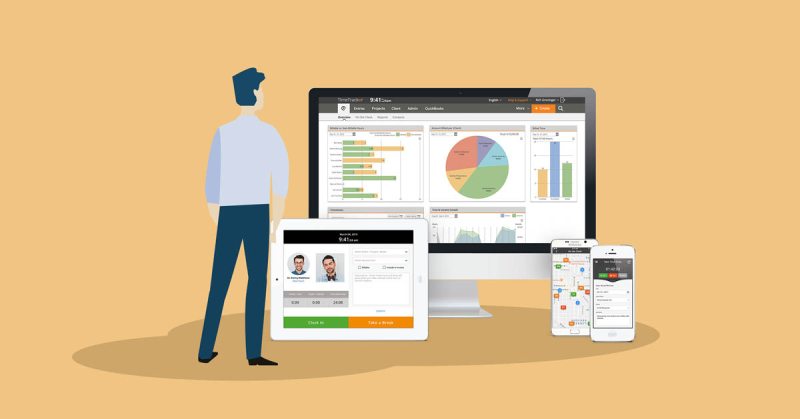Time tracking is a method of keeping track of how many hours employees work over a day or on a specific project.
You might think of a factory worker's friend stamping their cards when you hear "time tracking," but that's not all we're going to speak about. We'll go through what time tracking is and why it's so crucial for HR professionals and company owners.
You've heard it before: keep track of your time! Recognizing how you focus your energy, both personally as well as professionally, requires time recording. It's essential for efficiency, clarity, and a smooth workflow. This is essential for everyone in an institution, or in society at large. Keeping track of your time is critical even if you're an executive, a manager, or perhaps a teammate.
When it comes to sales, though, several questions arise, such as: How could I keep a sense of deadlines? Is this the most effective time management application? How can I monitor the time for installations? We'll do our best to answer them in this guide.
What Are the Benefits of Using Time Tracking Software?
All businesses want to streamline processes, reduce labour costs, and reduce productivity leakage. However, without data, you will be unable to perform this activity. To accomplish your productivity and efficiency goals, you'll need precise time data.
To that end, let's take a look at how time tracking software benefits businesses and helps them achieve their goals.
Invoicing and Timesheets Can Both Be Automated
A time tracking application's most basic gain is the elimination of a truckload of paper documents. Why would you need a paper trail or Excel spreadsheet when employees can check in manhours themselves?
Traditional plots aren't up to the task. You need to get a robust time reporting system that is automated, offers complete employee time evaluation, and connects with invoicing and project management systems.
Records Are More Accurate, and They Are Upgraded More Often
If you pay freelance or contractors by the week, they can submit their cash receipts directly into your project planning.
Setting a daily timetable, on the other hand, can eliminate the necessity for a manual time clock if you bill your clients hourly. Once you've completed a project, the time tracker's billing component will create an account for you.
A time tracker will provide you with a lot more detail about a site's expenses, such as reworks, cooperation, and production costs.
If you retain adequate records, you'll be in a better position to come up with a pricing structure for your next tasks and price them more affordably.
You don't know how much it costs your employees one average to complete job X in the past unless you get actual logbook data. Calculate total labour costs for a job by computing the total usual free time by both the number of hours. If you don't account for those unproductive hours, you'll likely wind up price movement the project.
Data such as time and attendance may be a great motivator for teams to better their time efficiently.
You recognize the benefits of time tracking, but your people do not. They are just not going to be pleased and use time-tracking software, either. As no one likes being observed, opposition becomes reasonable.
Your employees' fears are founded on the belief that time data would be used for micromanagement. The manager, on the other hand, is in charge of transmitting the necessary information.
Management of Performance
Instead of emphasising responsibility, employee engagement is increasingly emphasising improvement. Your idea isn't to admonish an employee concerning inefficiency, but also to have meaningful dialogues with them about whether they'll improve their performance.
Of course, data still is needed to help members of the group improve. You must evaluate how much time they spend on a specific project within a set time frame.
With these statistics, you can use process improvement methodologies like variance analysis. If you have any insight regarding your employees' performance, you can offer initiatives to promote them to become more effective.
It's crucial to understand that you can't force individuals to participate. You may help them understand how time monitoring benefits both them and the company by talking to them before establishing a time tracking system.
You should spend some time studying more about how to make change easy for your staff and how to implement it without disrupting operations now that you understand what time tracking is the benefits of time tracking, and the potential problems time tracking.
Successful leaders demonstrate that time tracking is beneficial to both consumers and firms. Team members can use time tracking to work toward their own and shared aims, putting their time where this matters the most, neither personally nor professionally. The manager uses the time continuous monitoring to acquire a detailed image of their team's top performance, overall well-being, and performance, and sometimes even work redistribution.
As an executive, leverage time tracking evidence and information to steer your firm in the correct direction, implement the strategy and guarantee that just about every individual manager or project member understands or brings the organisation together, not together, towards the same vision and mission statement.







